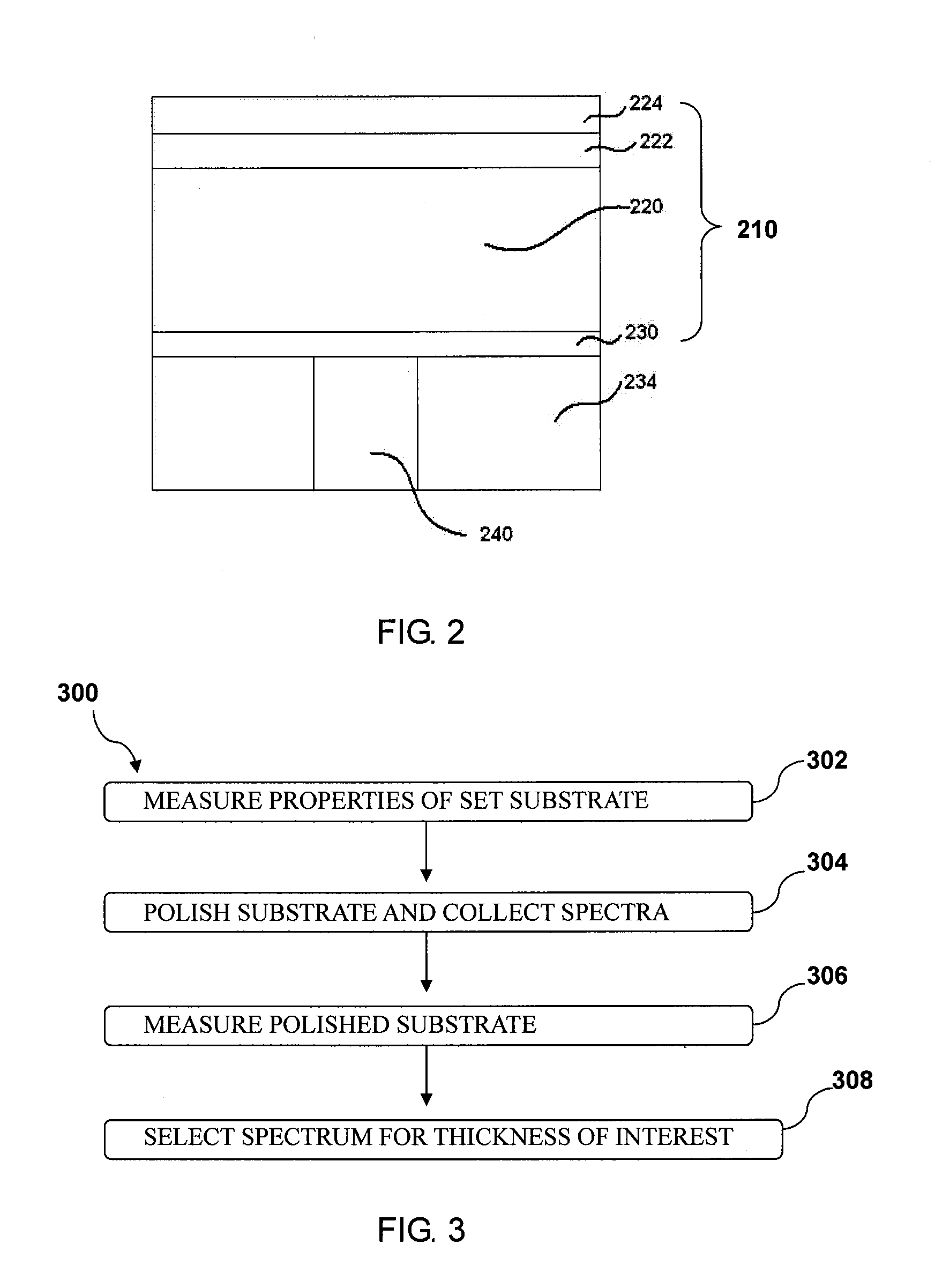Endpoint control during chemical mechanical polishing by detecting interface between different layers through selectivity change
- Summary
- Abstract
- Description
- Claims
- Application Information
AI Technical Summary
Benefits of technology
Problems solved by technology
Method used
Image
Examples
Embodiment Construction
[0022]As discussed previously, variations in the polishing pad condition and the relative speed between the polishing pad and the substrate, etc. can cause variations in the material removal rate. If multiple wafers are to be polished simultaneously, e.g., on the same polishing pad, variations in the initial thickness of the substrate layer, polishing rate variations due to the polishing pad condition, and the relative speed between the polishing pad and the substrate, etc., can lead to the substrates reaching their target thickness at different times. Similarly, if polishing is halted simultaneously for the substrates, then some substrates may not be at the desired thickness. On the other hand, if polishing of the substrates is stopped at different times, then some substrates may have defects and the polishing apparatus will likely be operating at lower throughput.
[0023]As will be discussed below, by identifying interfaces between different layers, from in-situ measurements, a proj...
PUM
 Login to View More
Login to View More Abstract
Description
Claims
Application Information
 Login to View More
Login to View More - R&D
- Intellectual Property
- Life Sciences
- Materials
- Tech Scout
- Unparalleled Data Quality
- Higher Quality Content
- 60% Fewer Hallucinations
Browse by: Latest US Patents, China's latest patents, Technical Efficacy Thesaurus, Application Domain, Technology Topic, Popular Technical Reports.
© 2025 PatSnap. All rights reserved.Legal|Privacy policy|Modern Slavery Act Transparency Statement|Sitemap|About US| Contact US: help@patsnap.com



